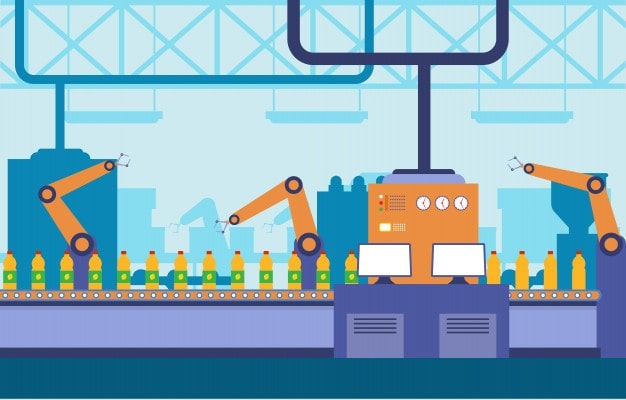Table of Contents
Definition
Production capacity is defined as maximum production or output, which can be produced in business with the help of available resources. The capacity is calculated over days or weeks or months. The measurement is done in a way that we can adjust our production capacity according to the demand from the market.
There is no concept of maximum production since the ‘maximum’ that company produce could be infinite – with the right tools, that is if all other variables involved in production are considered maximum and constant. However, for the sake of discussion, the maximum is the best that can be produced at a given time.
It can also be understood as to how you manage the available employees, time, and resources in the most efficient way possible to fulfil the demand. Such decisions take time and are dependent on multiple factors like:
- Raw materials should be readily available – somewhat ready whenever required so that they can be used whenever needed. This is true, especially during seasonal demands. For example, requirements of candies go up during Halloween, or decorative items sale would increase around Christmas. In such cases, the company has to have ample stock to fulfil market demand.
- Human resources and labour should be present as and when necessary, preferably at all times. If there are shifts of people working on the same machine, then the production capacity increases. For example, if workers of day shift run and utilize the devices for 12 hours – from 8 am to 8 pm and then the output would be – say A units. If the machines are being used for 12 more hours – from 8 pm to 8 am by night shift workers, then the output would be 2A.
- Equipment are expected to work optimally and reduce time and cost. As the utilization of the equipment increases, its life reduces. The machine initially operates at full capacity, but as the times go and the work on it increases, the ability goes down. To avoid this, the machines need to be serviced periodically and, if defunct, then needs to be replaced.
- Adequate warehousing and storage facilities should be present, considering the demand as well as the shelf life of the product.
Average Annual Production capacity
It is defined as the sum of average capacity at the start of the year and average annual capacity of equipment during the year of purchase of equipment after reducing the average annual capacity of equipment during the year.
Calculation of Machine hour Capacity
The first step is to understand and calculate the capacity of the machine hour in the factory. What example of the factory has 100 machines, and the workers in the factory utilize the machine from 8 am to 8 pm for 12 hours a day, then the capacity would be 12 multiplied by hundred, which comes to 1200 machine hours.
Production capacity with a single product
The production capacity is pretty straightforward for a single product. The time to produce a single product is determined, and it is divided by the plant capacity in hours.
For example, if one worker takes 30 minutes (0.5hrs) on a machine to make one product and the capacity of the machine has 1200 hours, then the production capacity would be
1200 / 0.5, which would be 2400 units per day.
Production Capacity Calculation
When there is a mix of products present to calculate the production capacity, then it can get more complicated.
For example, apart from producing a unit of product which takes 30 minutes a day, the manufacturing facility also makes a product B, which takes 15 minutes or 0.25 hours on one machine for one unit. In this case, the number of units multiplied by 0.5, plus the number of units of Product B increased by 0.25.
Therefore at 1200 machine-hours, one combination of production would be either 2400 units per day or 4800 of Product B per day.
Understanding the Production capacity utilization rate
If the production capacity is known, then you can measure the capacity. The measurement of what percentage of capacity the business is running at is called a capacity utilization rate.
The capacity utilization rate is calculated by dividing actual output with potential output. For example, if the business is producing 2400 units of a product birthday, continuing the above example, but now it only produces 2000 units per day, then the capacity is 83.3%.
The higher the percentage, the better is the capability of the business to perform at full capacity.
Another example of Production Capacity
A company is in the manufacturing of Shirts. Now, let us consider that it has 100 machines and takes 1 hr to produce one shirt. The same machines are also able to manufacture buttons that require 10 minutes or (0.16 hrs) to produce one button. The machines work from 8 am to 6 pm (10 hours per day)
- Therefore, the machine hour capacity is :
Total number of machine utilization hours x number of machines
100 x 10
Machine hour capacity = 1000 hours
- Production capacity
- with a single product: = Total machine hours/time required to produce 1 unit of product
= 1000/1 (1 shirt takes 1 hour)
= 1000 shirts.
- for multiple products: Total machine hours/time required to produce 1 unit of product
= 1000/0.16
= 5,998 buttons
So the machine can either produce 1000 shirts or 5998 buttons
- Production capacity utilization rate
When the machines were new, they used to operate for 10 hrs at 100% capacity.
Therefore the output was 1000 shirts a day. But after about a year, the machines were able to produce only 900 shirts at a day, rest all variables kept constant.
Therefore the production capacity utilization rate = new capacity / earlier capacity
= ( 900 / 1000 ) x 100
Thus the production capacity utilization rate is now only 90% of original capacity.
Liked this post? Check out the complete series on Operations Management


